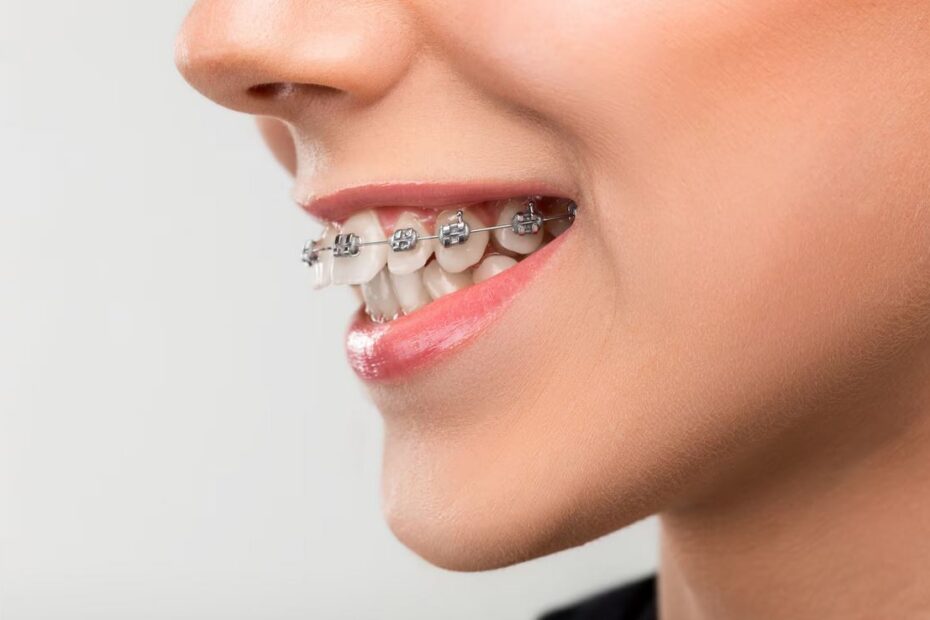
Having a perfect smile is something that many people desire. A beautiful smile can boost confidence, improve self-esteem, and make a lasting impression. However, not everyone is born with straight teeth. That’s where Braces Beautified comes in. Braces Beautified is a company dedicated to helping people achieve their perfect smile through orthodontic treatment.
Braces Beautified understands the importance of a beautiful smile and the impact it can have on a person’s life. They believe that everyone deserves to feel confident and proud of their smile. With their expertise in orthodontics, they offer a range of treatments to help individuals achieve the smile they’ve always dreamed of.
Understanding the Different Types of Braces Available
When it comes to orthodontic treatment, there are several types of braces to choose from. The most common type is traditional metal braces, which consist of metal brackets and wires. These braces are highly effective in straightening teeth but may be more noticeable than other options.
Ceramic braces are another option for those who want a less noticeable treatment. These braces are made from tooth-colored ceramic material, making them blend in with the natural color of the teeth. While they are less noticeable than metal braces, they may be more prone to staining.
Lingual braces are a discreet option as they are placed on the backside of the teeth, making them virtually invisible from the front. However, they can be more challenging to clean and may cause some discomfort due to their placement.
Clear aligners, such as Invisalign, are a popular choice for those who want a nearly invisible treatment option. These aligners are custom-made and are removable, allowing for easy cleaning and eating. However, they may not be suitable for severe orthodontic issues.
When choosing the right type of braces for you, it’s essential to consider factors such as the severity of your orthodontic issue, your lifestyle, and your budget. Consulting with an orthodontist will help you determine the best treatment option for your specific needs.
What to Expect During Your Braces Journey
Embarking on a braces journey can be both exciting and overwhelming. Understanding what to expect can help ease any anxieties and prepare you for the process ahead.
The first step in your braces journey is a consultation with an orthodontist. During this appointment, the orthodontist will evaluate your teeth and bite, take impressions and X-rays, and discuss treatment options with you. They will also provide you with an estimated timeline for your treatment.
Once you have chosen a treatment option, the next step is getting your braces placed. This procedure involves bonding the brackets to your teeth and threading the wires through them. It is generally painless but may cause some discomfort or pressure.
Throughout your treatment, you will need to visit your orthodontist regularly for adjustments. These appointments involve tightening or replacing wires and making any necessary changes to ensure your teeth are moving correctly.
Preparing for your braces journey involves taking care of any necessary dental work before getting braces, such as fillings or cleanings. It’s also a good idea to stock up on soft foods that are easy to eat during the initial adjustment period.
The Importance of Proper Oral Hygiene with Braces
Maintaining good oral hygiene is crucial when wearing braces. Braces create more areas for food particles and plaque to accumulate, increasing the risk of tooth decay, gum disease, and bad breath.
To maintain good oral hygiene with braces, it’s essential to brush your teeth thoroughly after every meal. Use a soft-bristle toothbrush and fluoride toothpaste to clean around the brackets and wires. Pay extra attention to areas where food can get trapped, such as between brackets and under wires.
Flossing is also essential with braces. Use a floss threader or orthodontic floss to clean between your teeth and under the wires. Consider using a water flosser or interdental brushes to reach areas that are difficult to clean with traditional floss.
Using mouthwash can help kill bacteria and freshen your breath. Look for an alcohol-free mouthwash that is safe for use with braces. Rinse your mouth for 30 seconds after brushing and flossing.
Common oral health issues that can arise with braces include tooth decay, gum inflammation, and white spots on the teeth. To prevent these issues, it’s important to maintain good oral hygiene, avoid sugary and acidic foods, and visit your orthodontist regularly for check-ups.
Tips for Managing Discomfort and Pain While Wearing Braces
It’s common to experience some discomfort and pain when wearing braces, especially after adjustments. This discomfort is usually temporary and can be managed with a few simple tips.
One way to alleviate discomfort is by using orthodontic wax. Apply a small amount of wax to any brackets or wires that are causing irritation or rubbing against your cheeks or gums. This will create a barrier between the braces and your mouth, reducing friction.
Taking over-the-counter pain relievers such as ibuprofen or acetaminophen can also help manage discomfort. Follow the instructions on the packaging and consult with your orthodontist if you have any concerns.
If you experience severe pain or discomfort that is not relieved by these measures, it’s important to contact your orthodontist. They can assess the situation and make any necessary adjustments to provide relief.
The Role of Diet in Maintaining Healthy Teeth While Wearing Braces

Maintaining a healthy diet is essential for overall oral health, but it becomes even more crucial when wearing braces. Certain foods can damage or break the brackets and wires, prolonging treatment time and potentially causing discomfort.
Foods to avoid while wearing braces include sticky and chewy foods such as gum, caramel, and taffy. These foods can get stuck in the braces and are difficult to clean, increasing the risk of tooth decay.
Hard and crunchy foods should also be avoided as they can damage the brackets and wires. Examples of these foods include nuts, popcorn, and hard candies.
Instead, opt for soft and easy-to-chew foods that won’t damage your braces. Some examples include mashed potatoes, yogurt, pasta, and cooked vegetables. It’s also important to drink plenty of water to stay hydrated and rinse away any food particles.
How Long Will It Take to Achieve Your Perfect Smile with Braces?
The length of time it takes to achieve your perfect smile with braces can vary depending on several factors. The severity of your orthodontic issue, the type of braces you choose, your compliance with treatment, and your body’s response to treatment can all affect the timeline.
On average, orthodontic treatment with braces can take anywhere from 18 months to 3 years. However, some cases may require shorter or longer treatment times. Your orthodontist will provide you with an estimated timeline based on your specific needs.
To stay on track with your treatment plan, it’s important to follow your orthodontist’s instructions carefully. This includes attending all scheduled appointments, wearing elastics or other appliances as directed, and maintaining good oral hygiene.
The Benefits of Braces Beyond Aesthetics: Improving Oral Health and Function
While achieving a perfect smile is often the primary goal of orthodontic treatment, braces offer several other benefits beyond aesthetics. Straightening your teeth can improve your oral health and overall dental function.
Braces help align your teeth properly, making it easier to clean them effectively. This reduces the risk of tooth decay, gum disease, and other oral health issues. Straight teeth are also less prone to wear and tear, reducing the likelihood of chipped or broken teeth.
Orthodontic treatment can also improve your bite, which affects how you chew and speak. Correcting bite issues can alleviate jaw pain, headaches, and other discomforts associated with misaligned teeth.
Investing in orthodontic treatment can prevent future dental issues and potentially save you money in the long run. By addressing orthodontic problems early on, you can avoid more extensive and costly dental procedures later in life.
Life After Braces: Maintaining Your Perfect Smile
After your braces are removed, it’s important to maintain your perfect smile to ensure long-lasting results. This involves wearing retainers as directed by your orthodontist, practicing good oral hygiene, and attending regular dental check-ups.
Retainers are essential for maintaining the position of your teeth after braces. Your orthodontist will provide you with specific instructions on how often to wear your retainers and for how long. It’s important to follow these instructions to prevent your teeth from shifting back to their original positions.
Practicing good oral hygiene is crucial even after braces. Continue brushing your teeth twice a day, flossing daily, and using mouthwash. Regular dental check-ups will allow your dentist to monitor your oral health and address any issues that may arise.
Common issues that can arise after braces include tooth sensitivity, gum inflammation, and relapse (teeth shifting back to their original positions). To prevent these issues, maintain good oral hygiene, wear your retainers as directed, and contact your orthodontist if you have any concerns.
Frequently Asked Questions About Braces and Orthodontic Treatment
1. How much do braces cost?
The cost of braces can vary depending on factors such as the type of braces, the severity of the orthodontic issue, and the location of the orthodontist’s practice. On average, braces can cost anywhere from $3,000 to $7,000.
2. How often do you need to visit the orthodontist during treatment?
During orthodontic treatment, you will typically need to visit your orthodontist every 4 to 8 weeks for adjustments. These appointments allow your orthodontist to monitor your progress and make any necessary changes to your treatment plan.
3. Can adults get braces?
Yes, adults can get braces. In fact, more and more adults are seeking orthodontic treatment to improve their smiles and oral health. It’s never too late to achieve a perfect smile.
For additional resources and information about braces and orthodontic treatment, Braces Beautified offers a comprehensive website with articles, videos, and frequently asked questions. They also have a team of experienced orthodontists who are available to answer any questions you may have.
Orthodontic treatment with braces is a journey towards achieving a perfect smile and maintaining good oral health. Braces Beautified understands the importance of a beautiful smile and is dedicated to helping individuals achieve their dream smiles.
Understanding the different types of braces available, what to expect during your braces journey, the importance of proper oral hygiene, tips for managing discomfort and pain, the role of diet in maintaining healthy teeth, the timeline for achieving your perfect smile, the benefits of braces beyond aesthetics, life after braces, and frequently asked questions about braces and orthodontic treatment are all essential aspects of embarking on this journey.
By taking the first step towards a perfect smile with Braces Beautified, individuals can experience the life-changing benefits of orthodontic treatment and enjoy a lifetime of confidence and good oral health.
